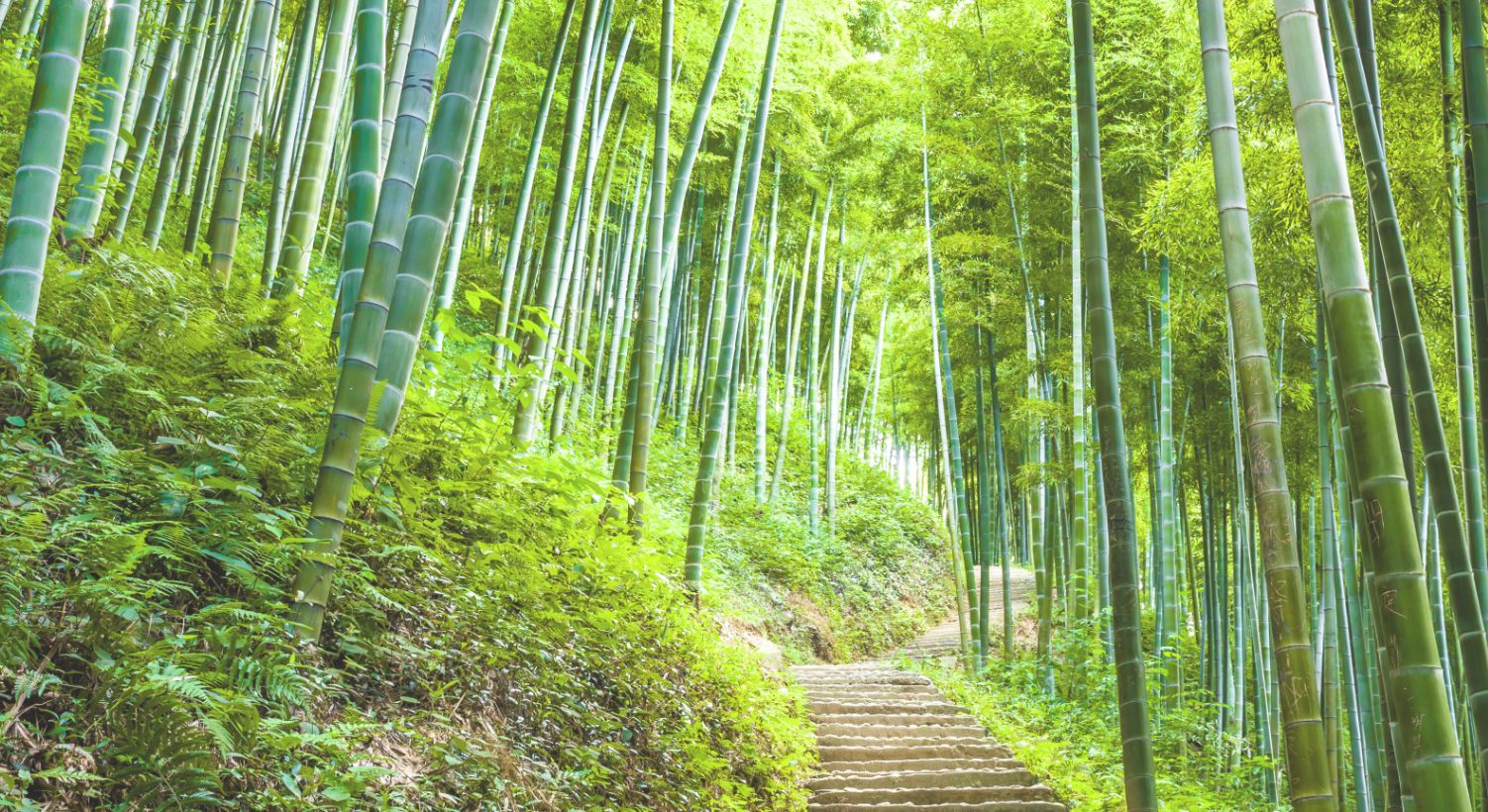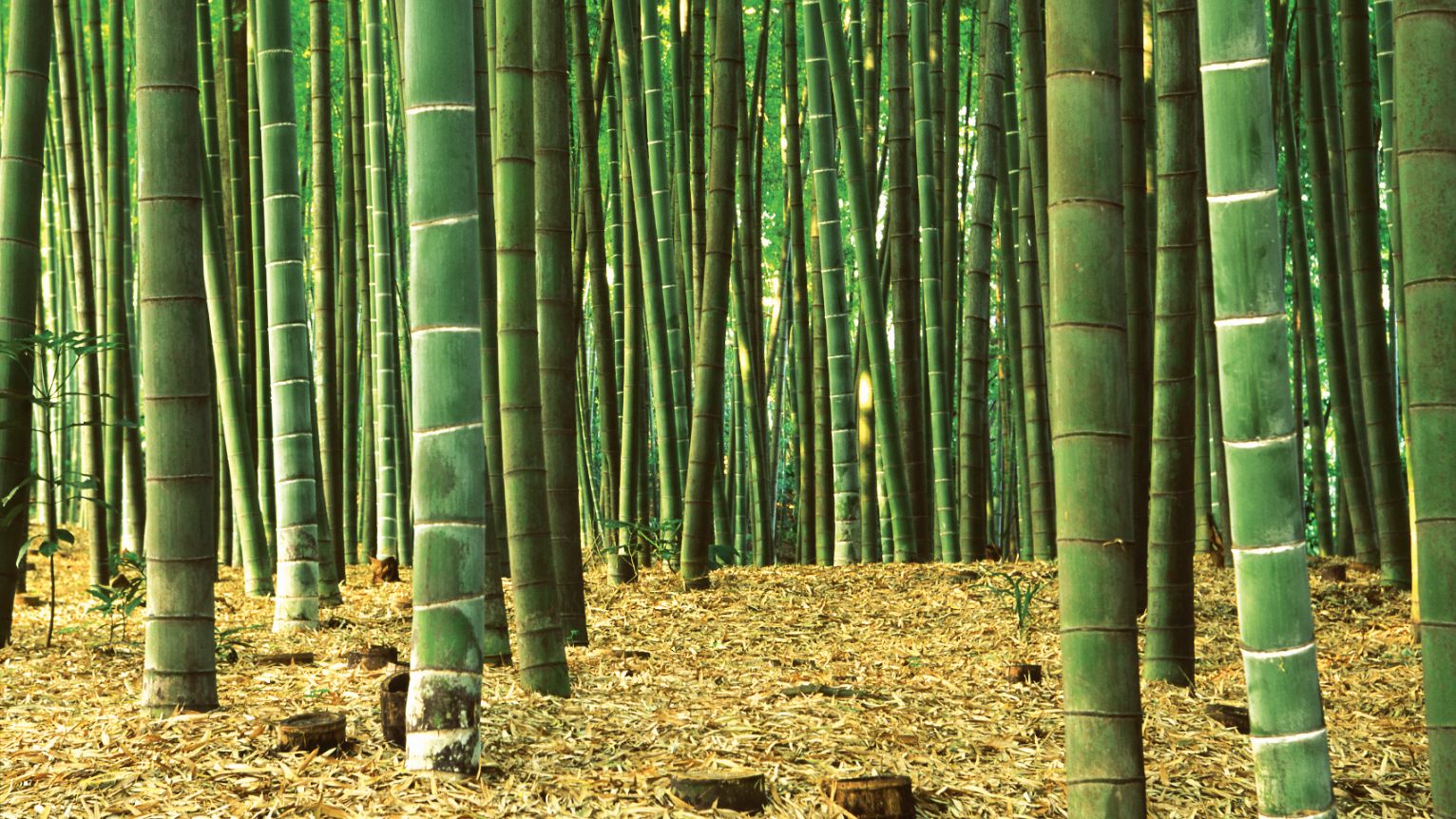Getting to the root of
the problem to create
a sustainable solution
Each time we shift from non-sustainable materials to sustainable bamboo we help save our world. And, oh how it feels so good.
In fact, your purchase of sustainable bamboo-viscose products not only provides luxury comfort for you, but it helps save the environment, too…it’s a Comfy Way to Save the Planet™.
Bamboo saves our soils, preserves our oceans, and cleans our atmosphere. It grows organically, renews itself almost immediately without replanting, prevents soil erosion, and reduces waste or indirectly replaces consumption of several critically scarce resources. And, it saves us, too.
Saves Our Soils
Problem
Every year, the U.S. generates 22.4 billion pounds of post-consumer textile waste, which ultimately ends up in U.S. landfills. According to the EPA, the recycling rate for items such as sheets and pillowcases is only 16.3 percent – landfills get the majority of everything else and most is non-biodegradable.1
Bamboo Solution
Bamboo grows out of earth’s natural soils without the use of any harmful chemicals or pesticides, making for cleaner, safer soils and healthier dirt quality. As part of Cariloha’s White Glove Service, we remove and dispose of customers’ older mattresses in an environmentally friendly way by separating mattress components to be recycled or turned into new products such as padding for carpeting.

Saves Our Oceans
Problem
Eighty percent of pollution to the marine environment comes from the land. One of the biggest sources is called nonpoint source pollution, which occurs as a result of runoff. Nonpoint source pollution includes many small sources, like septic tanks, cars, trucks and boats, plus larger sources, such as farms, ranches, and forest areas. Nonpoint source pollution can make river and ocean water unsafe for humans and wildlife. In some areas, this pollution is so bad that it causes beaches to be closed after rainstorms.2
Bamboo Solution
Because bamboo never has to be uprooted or reseeded after harvesting, and it doesn’t use harmful chemicals or herbicides, it helps retain and improve soil health and prevents dangerous water or chemical runoff that can pollute our oceans and waterways.
Cleans Our Air
Problem
Air pollution and carbon dioxide levels in the atmosphere are on the rise and becoming substantially worse every year. Air pollution is now considered to be the world's largest environmental health threat, accounting for 7 million deaths around the world every year. Air pollution causes and exacerbates a number of diseases, ranging from asthma to cancer, pulmonary illnesses and heart disease.4
Bamboo Solution
Bamboo becomes a highly beneficial tool to clean the air we breathe. Carbon dioxide is released into the atmosphere when hydrocarbon fuels (wood, coal, natural gas, gasoline, and oil) are burned.3 During combustion or burning, carbon from fossil fuels combine with oxygen in the air to form carbon dioxide. Stands of bamboo consume 45% more carbon dioxide and can produce 35% more oxygen than an equivalent stand of trees.
Grows Organically
Problem
The health effects of pesticides depend on the type of pesticide. Some harmful pesticides can affect the nervous system, while others may irritate the skin or eyes. Some pesticides may be carcinogens, and others may affect the hormone or endocrine system in the body.6 Plant fertilizers can irritate or poison people and pets if they’re touched, inhaled or accidentally ingested. Nitrates are the ingredients that cause the poisoning. Nitrates are a form of nitrogen that plants can easily absorb.5
Bamboo Solution
Bamboo requires no fertilizer, pesticides or chemicals to grow. It has no harmful residues left on it compared with non-sustainable, chemically damaging cultivation that other fabrics may require. Bamboo sequesters nitrogen and does not add chemicals to the environment.
Renews Itself Naturally
Problem
The loss of trees and other vegetation can cause climate change, desertification, soil erosion, fewer crops, flooding, and increased greenhouse gases in the atmosphere. Forests still cover about 30 percent of the world’s land area, but they’re disappearing at an alarming rate. The threats manifest themselves in the form of deforestation and forest degradation. The main cause of deforestation is agriculture (poorly planned infrastructure is emerging as a big threat too) and the main cause of forest degradation is illegal logging. We’re losing 18.7 million acres of forests annually, equivalent to 27 soccer fields every minute.6
Bamboo Solution
When you cut down bamboo, it grows right back. It’s part of the grass family. No reseeding or harmful chemicals are needed – just clean soil, sunshine and water. The bamboo lifecycle stays perpetually in motion, constantly enriching and replenishing the world around it. From soil-enriching mulch to ultra-soft bed sheets, every part of the plant can be utilized. Bamboo sustainability starts and ends in the soil.
Prevents Erosion
Problem
Once hardwood forests are clear-cut and the stumps are burned to provide fertilizer and space for growing crops, erosion inevitably occurs as the topsoil and nutrients are washed away by rainfall. The eroded soil then clogs rivers and streams and affects the lives of people and animals living downstream.
Bamboo Solution
Bamboo roots renew themselves and remain in place after harvesting, preventing erosion and helping retain nutrients for the next harvest. Bamboo can grow in arid regions where droughts cause other crops to fail and, since the roots are left in place after harvesting, it helps to preserve vital moisture in the soil. From low wetlands to higher elevations in the mountains, bamboo thrives in a wide range of climates.

Is bamboo a comfy way to help save the world? Mother Nature thinks so. And so does the Bamboo Nation. Each person makes a difference, and by using sustainable bamboo-viscose materials, we’re taking positive steps in the right direction.


